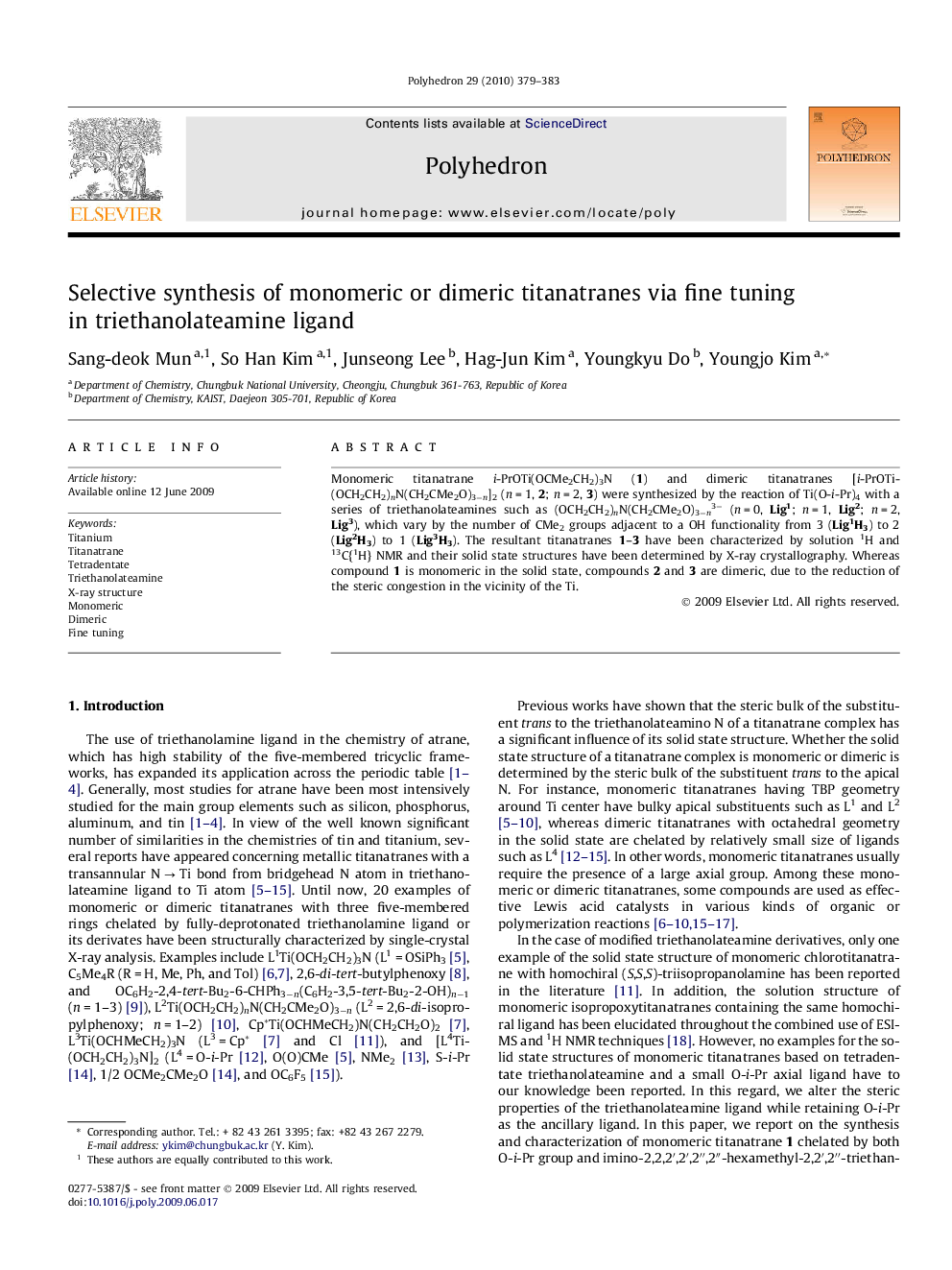| Article ID | Journal | Published Year | Pages | File Type |
|---|---|---|---|---|
| 1339521 | Polyhedron | 2010 | 5 Pages |
Monomeric titanatrane i-PrOTi(OCMe2CH2)3N (1) and dimeric titanatranes [i-PrOTi(OCH2CH2)nN(CH2CMe2O)3−n]2 (n = 1, 2; n = 2, 3) were synthesized by the reaction of Ti(O-i-Pr)4 with a series of triethanolateamines such as (OCH2CH2)nN(CH2CMe2O)3−n3− (n = 0, Lig1; n = 1, Lig2; n = 2, Lig3), which vary by the number of CMe2 groups adjacent to a OH functionality from 3 (Lig1H3) to 2 (Lig2H3) to 1 (Lig3H3). The resultant titanatranes 1–3 have been characterized by solution 1H and 13C{1H} NMR and their solid state structures have been determined by X-ray crystallography. Whereas compound 1 is monomeric in the solid state, compounds 2 and 3 are dimeric, due to the reduction of the steric congestion in the vicinity of the Ti.
Graphical abstractNew monomeric titanatrane i-PrOTi(OCMe2CH2)3N (1) and dimeric titanatranes [i-PrOTi(OCH2CH2)nN(CH2CMe2O)3−n]2 (n = 1, 2; n = 2, 3) were synthesized from the corresponding tetradentate ligands (OCH2CH2)nN(CH2CMe2O)3−n3− (n = 0, Lig1; n = 1, Lig2; n = 2, Lig3), respectively, using Ti(O-i-Pr)4. X-ray analysis shows that monomeric complex 1 has somewhat distorted trigonal bipyramidal geometry around Ti. However, dimeric compounds 2 and 3 have slightly distorted octahedral structure similar to that of [i-PrOTi(OCH2CH2)3N]2 (4).Figure optionsDownload full-size imageDownload as PowerPoint slide
